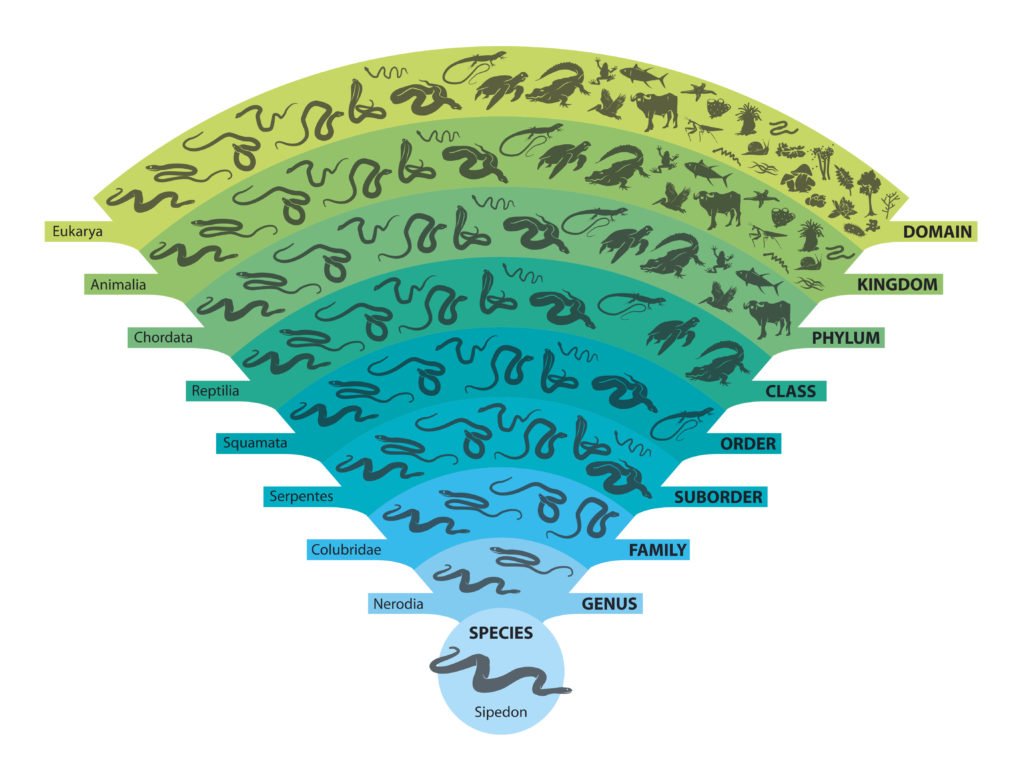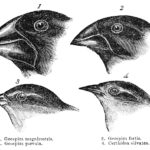|
Scientists believe that there are over 10 million different kinds of lifeforms, or species, on Earth. Imagine trying to study and understand the lives, patterns, behaviors and evolution of so many different kinds of organisms. In order to make their job easier, scientists classify living things into groups based on how they are the same and how they are different. |
|
As an example, think of your Halloween candy. On Halloween night after returning from trick or treating, what do you and your friends do? Many kids pour their candy out on the floor or bed and begin separating the candy into piles based on how the candy items are the same and how they are different. |
The chocolate goes into one pile, the Smartees™ into another, the Sugar Daddies™ into yet another pile, until all the candies are in the appropriate place. Biologists do the same thing with lifeforms. Instead of dumping all the lifeforms on the floor and placing them in piles, scientists write down which group each type of organism belongs to in books.
|
Scientists who classify living things are called taxonomists. It is their job to look at every kind of living thing and determine how they are similar and how they are different to other living things. |
|
Here is where it gets a little tricky. A lifeform might be very similar to one living thing, but less similar to another, and even less similar to a third living thing. For example, a dog is very similar to a wolf, less similar to a horse, and very different from a lizard. |
Kingdoms of Life
|
To help scientists keep this all straight, they start by classifying, or by placing lifeforms in groups called kingdoms. These kingdoms represent a very large group of lifeforms that are all similar in some ways, but can be very different from one another in other ways. The six kingdoms that biologists have developed are the Archeabacteria Kingdom, the Eubacteria Kingdom, the Protist Kingdom, the Fungi Kingdom, the Plant Kingdom, and the Animal Kingdom. |
|
How would you divide your Halloween goodies into kingdoms? Remember, we are trying to come up with only a few different types of classification groups. One possible way to divide the treats into kingdoms could be the Edible Kingdom, and the Non-Edible Kingdom. The word “edible” means that you can eat it. All your edible goodies would go in one pile, and all your non-edible goodies, like pencils, stickers, tooth brushes, etc, could go in another. It is important to note that this is only an example. If you choose to divide your stuff differently, you are not incorrect. Even today among scientists there is still much debate about how things should be divided. |
Phylum
|
The next group that scientists have developed to further classify living things is the Phylum (plural: phyla). Lifeforms are grouped together based once again on how they are similar and how they are different. Let’s look at a phyla found in the Animal Kingdom. Everything in the Animal Kingdom is similar to each other in important ways. Can you think of some ways that animals are similar to one another? How are they different? |
|
One important way that animals are different is whether or not they have a backbone. Animals with a backbone belong to the Chordata Phylum. It is important for you to know that some members of this phylum do not have a backbone. However, they do have a strengthening rod similar to a backbone. |
How might you group your Halloween goodies into different phyla? In the previous example, we decided that we would break our treats into two kingdoms: The Edible Kingdom and the Non-Edible Kingdom.
Under the Edible Kingdom, two possible phyla might be the Good For Me Phylum, and the Bad For Me Phylum. Again, this is only one possible example. We encourage you to be creative in thinking of your own phyla.
Classes
|
Scientists continue to classify animals further into groups called classes. How do you think they decide which animals belong to which classes? If you guessed “how they are the same and how they are different,” you guessed correctly. |
|
In the Animal Kingdom and under the chordata phylum, there are five classes. These are mammals, birds, reptiles, amphibians, and fish. Both a monkey and a lizard belong to the Animal Kingdom, and both also belong to the Chordata Phylum. However, a monkey belongs to the Mammal Class, while a lizard belongs to the Reptile Class. |
Order, Family, Genius, Species
Biologist continue classifying lifeforms further into Orders, Families, Genius, and Species. In the example below, you can see how scientists have classified the European Tree Frog. Notice that the tree frog starts out in the very broad Animal Kingdom, from there each group becomes more and more narrow, until we have only this type of frog. Also, notice that each time we move to a smaller group, the lifeforms are more similar to one another.






